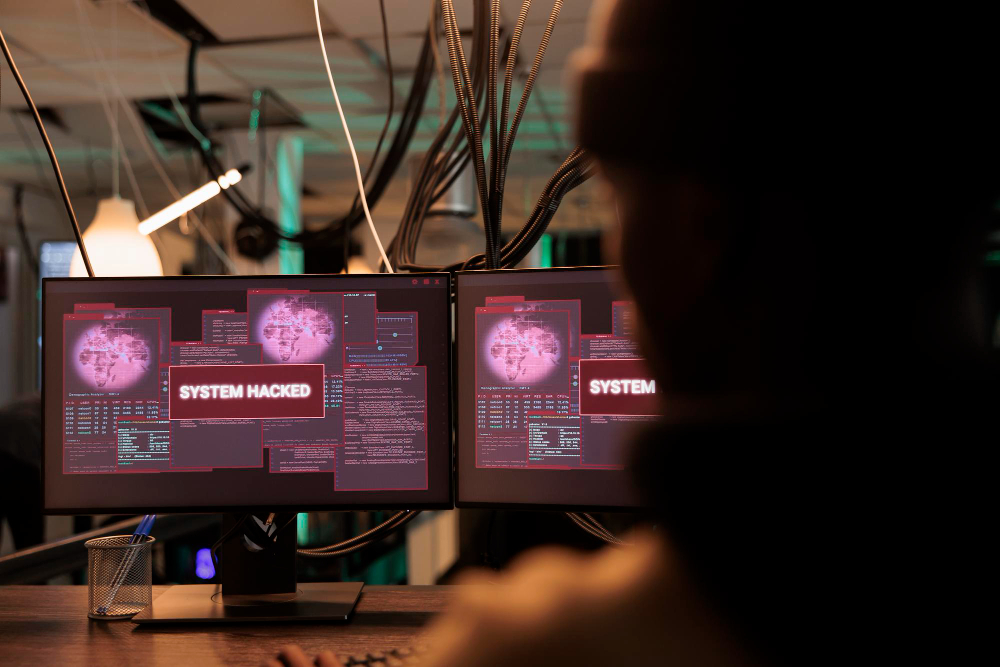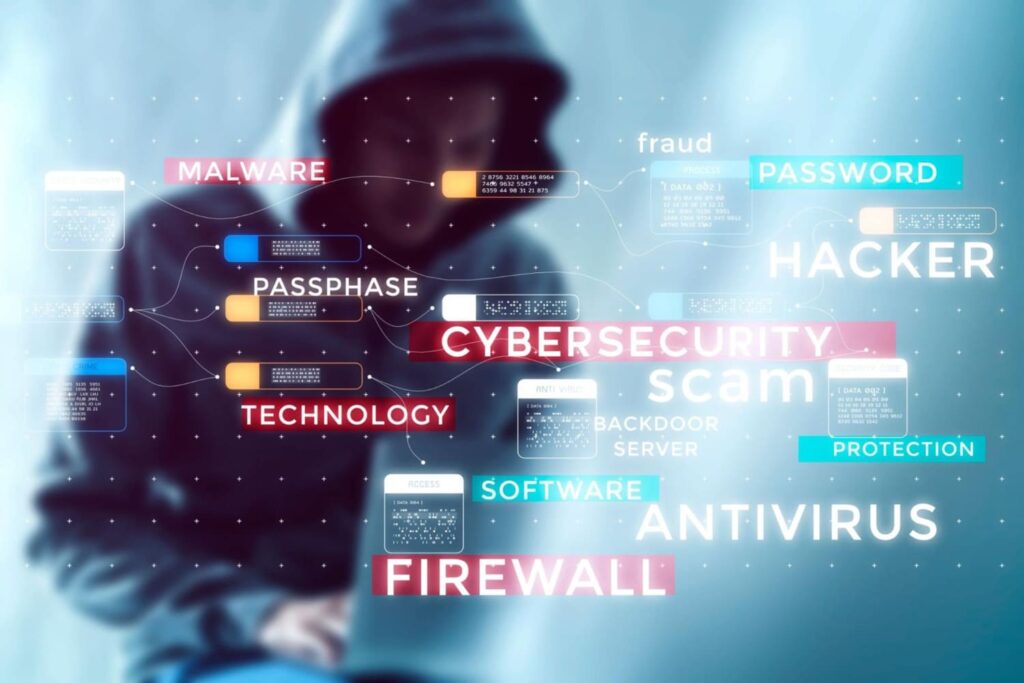Just as in the real world, the cyber world has its share of bad things, like threats, which are known as cyber security threats. No one wants to experience these threats on their devices, right? That’s why it’s essential to learn cybersecurity threats and how to avoid them if you’re actively using the internet.
This article will delve into all about cybersecurity threats, including what they are, the most common ones, their sources, and so on. This way, you can learn how to prevent and manage them if you encounter any.
Without further ado, let’s get started!
What are Cybersecurity Threats?

Cybersecurity threats are criminal actions done by groups or individuals who want to harm or gain unauthorized access to computer systems and the information stored in them. The aim is to create risks that disrupt operations, steal sensitive data, or cause various forms of damage to information security.
Cyber threats come from various sources and can be in different forms. As technology continues to advance, these threats change quickly to attack vulnerabilities in our systems and data. Staying up-to-date will help you stay safe.
Common Cybersecurity Threats

Once cybercriminals take action, devices with high-vulnerability systems become easy targets for them. Here are several types of threats that you need to be aware of to keep your device secured:
Malware
Malware (malicious software) is a harmful program that gets into a system to mess up the way data is kept safe, accurate, or available. It can stealthily infiltrate and significantly impact your data, applications, or operating system, making it one of the most significant external threats to systems. It can cause severe widespread damage and disruption, requiring massive efforts within most organizations to address.
There are various forms of malware. However, the most common type, which become the concern of most organizations, is Spyware. It is a type of software that secretly gathers information about a person or organization and sends it to another entity without their consent.
Ransomware
Ransomware is a cyber threat that blocks victims from accessing sensitive information by encrypting it and demanding a ransom for its release.
This threat gets into computer networks and locks up files using a special coding called public-key encryption. This coding is kept on the cyber criminal’s server, not on the infected computer. The cybercriminals then demand money (a ransom) in exchange for the key that unlocks the files. They use this encryption to keep the data captive and force people to pay up.
Phishing
Phishing is when cybercriminals pretend to be someone they’re not, like an official government or trusted company, to trick you into giving them important data. They might send fake emails or create fake websites that look real to get your passwords, credit card numbers, or other private details.
Phishing attacks can be executed through a variety of methods. The methods of this social engineering can include email spoofing, deceptive websites, or phone calls that impersonate trusted entities, all designed to trick victims into revealing personal or financial information.
Imposter Websites
This cyber threat is similar to phishing and involves imposter websites that mimic legitimate ones to deceive users. These websites are designed to trick people into entering their personal information, which can be used for fraud. AI for cybersecurity plays a crucial role in detecting and preventing these attacks by analyzing website content, traffic patterns, and user behavior to identify suspicious activity.
Distributed Denial-of-Service (“DDoS”) Attacks
DDoS attacks are a type of cyber attack where multiple compromised systems, often infected with malware, are used to overwhelm a single system or network with a flood of internet traffic or data requests.
The aim is to interrupt the normal operations of the target, slowing it down or rendering it unavailable to legitimate users. These attacks can result in financial losses and harm the reputation by disturbing websites, online services, or entire networks, raising an alert for a potential incident.
Vendor Breaches (“Supply Chain Issues”)
Vendor breaches happen when third-party vendors or suppliers who provide services or products to an organization experience a security incident to their systems. If the data security of vendors who help with important tasks is breached, it might let criminals get sensitive customer information or disrupt how the business runs.
This can be very harmful, especially if the vendors are crucial for the business’s daily activities, as they might have access to critical systems or data that bad actors could misuse. So, it’s essential for companies to check how secure their vendors are to reduce the risk of these breaches happening.
Firm Account Compromise or Takeover
Firm Account Compromise or Takeover is when outsiders gain unauthorized access to a company’s accounts. Usually, this can happen through hacking employee’s accounts or phishing attacks, where cybercriminals get hold of login details. They then use these details to make unauthorized transactions in financial accounts, access company systems, or take control of bank accounts or credit cards linked to the company.
Customer Account Takeover (ATO)
Customer Account Takeover (ATO) happens when someone gets into a customer’s online account without permission. They might do this by tricking the customer or by using stolen information. Once they’re in, they can use the account for fraud or to steal personal details. It’s a serious problem that can cause financial loss and harm a customer’s trust in the company.
Common Sources of Cyber Threats

Cyber threats can originate from various sources. Here is a list of common sources from which these threats may arise:
Hackers
Hackers, often motivated by personal gain, ideology, or the challenge of breaking into systems, use their technical expertise to exploit vulnerabilities in computer systems or networks. Their actions can vary widely, from minor pranks to elaborate cyber attacks to compromise sensitive data or critical infrastructure.
This process of exploiting weaknesses underscores the need for robust cybersecurity measures to protect against such threats.
Criminal Groups
Cybercriminals operate to make money. They carry out activities like identity theft, ransomware attacks, or selling stolen data on the dark web. Their actions are usually well-planned and can lead to significant financial harm for those targeted. This underscores the importance of maintaining security standards to protect against such threats.
Nation State
Some countries are good at using cyber attacks as part of their military or spy operations. These attacks can focus on government agencies, military stuffs, or important industries. They can cause big problems for a country’s safety and how it gets along with other countries. That’s why it’s important to have secure websites and strong national security to stop these kinds of attacks.
Malicious Insiders
When people in a company misuse their access rights, it can be a big problem. They might take important information, mess with the company’s systems, or do other bad things that can hurt the company’s image and how it works. These threats and attacks can seriously harm a company’s functioning and reputation. Therefore, it’s crucial to ensure that the individuals within a company are trustworthy.
Terrorist organizations
While traditionally associated with physical attacks, terrorist groups are increasingly using cyber tactics to achieve their goals. Cyber attacks by terrorist organizations can disrupt critical services, spread fear and propaganda, or target specific individuals or organizations perceived as adversaries.
Frequently Asked Questions
What are the most common types of cyber security threats and how can I prevent them?
Common cybersecurity threats include phishing, malware, ransomware, imposter websites, denial-of-service attacks, vendor breaches, customer account takeovers, and firm account compromises.
To prevent these threats, it’s important to educate yourself and your staff, use strong passwords and multi-factor authentication, keep software updated, use antivirus and antimalware software, secure your network, backup your data, and implement access controls.
How can I detect and respond to cyber security threats in my network or system?
To detect and respond to cybersecurity threats in your network or system, use tools like IDS and IPS to monitor traffic for unusual activity, implement SIEM systems to analyze log data, and stay informed about new threats. Also, remember to have an incident response plan.
What are the best practices and tools for cyber security threat management and mitigation?
The best practices and tools for managing and reducing cybersecurity threats include regular security audits, patch management for software updates, firewalls and intrusion detection systems, employee training, data encryption, incident response planning, backup and recovery plans, cyber insurance implementation, and many more.
Conclusion
We have already experienced the significant benefits that computer networks bring to our lives, not only for personal use but also for businesses. However, amidst these advantages, we must also be aware of the increasing prevalence of cyber security threats.
Stay informed and take proactive measures to protect ourselves and our businesses from these potential risks. If you need help regarding this, go and contact Fluxgate today!
